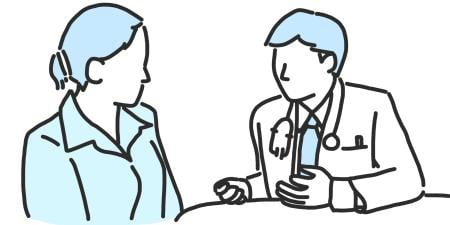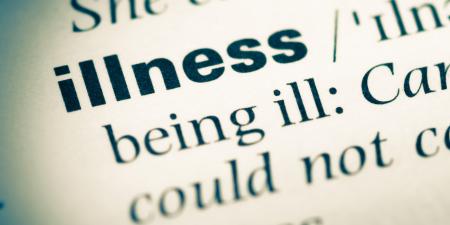“So let’s see if I have this right,” one reader wrote in response to an ABC News report on selective eating disorder. “There is a genetic or neurological disorder that makes someone only eat grilled cheese sandwiches, french fries and waffles. Who knew?”
Although newly minted mental illnesses are often met with this kind of skepticism, medical diagnoses for human behaviors continue to proliferate. The criticism heaped on social anxiety disorder and attention-deficit/hyperactivity disorder (ADHD) diagnoses hasn’t stopped doctors from writing millions of prescriptions for Paxil and Adderall or dissuaded psychiatrists from proposing new disorders—from picky eating and overuse of the Internet to hoarding and excessive shopping [1].
While critics often blame pharmaceutical companies for medicalizing disfavored features of the human condition, these companies are tilling fertile soil. As spiritual explanations for illness have given way to biological ones, there is increasing acceptance of the idea that biology determines not just the functioning of our bodies, but how we feel and behave. And since those feelings and behaviors profoundly influence (and are influenced by) our social interactions, we seem increasingly inclined to view biological differences that affect the quality of those interactions—say, short stature or frown lines—as fundamentally medical problems.
This expansion of medicine’s purview has had significant social consequences. Behaviors and traits once viewed as moral failings or personality flaws, like addiction or shyness, are increasingly viewed as illnesses. Assigning conditions diagnostic labels not only makes them eligible for treatment and insurance coverage, but also entitles the afflicted to a range of important accommodations. Students diagnosed with learning disorders are entitled to supplemental tutoring, shorter tests, and extra time to complete their work. Attorneys for criminal defendants often argue, sometimes successfully [2], that their clients deserve more lenient sentences because brain disorders mitigate their responsibility for their actions.
Diagnostic labels can also confer psychological benefits that are no less important to the people who bear them. Many people seem to feel validated when the institution of medicine acknowledges their problems as “real.” Online news reports on selective eating disorder are often followed by comments from picky eaters expressing some variation of “See! It’s not all in my head!” While this is a perplexing reaction to having been labeled mentally ill, it illustrates how attaching a medical label to a set of behaviors can reframe their social meaning. Instead of being childish picky eaters, selective eaters have an illness that’s no fault of their own, and the people who would judge them are recast as bigots. Perhaps this reframing effect explains why the Duke Center for Eating Disorders “treats” this problem primarily by “helping picky eaters overcome their embarrassment and feel entitled to their own preferences” and “teaching friends and family members ‘the person is not doing this to be willful and bratty’” [3]. For disorders whose key symptom is not a health deficit but embarrassment—the disorder with a thousand faces—the diagnosis itself becomes a form of treatment, by reducing the stigma that attaches to the patient’s behavior.
The fact that some people feel empowered by being labeled mentally ill is a testament to the enormous social significance of diagnosis in contemporary America. But the same forces that have expanded the scope of medicine to encompass social problems could ultimately deprive diagnosis of its importance. By becoming ubiquitous, diagnoses could become irrelevant as markers of social differences.
One reason we attach significance to mental diagnoses is that we still tend to view them as exceptions. We are still inclined to think of “normal” behaviors as expressions of our character, our values, or possibly our souls, while increasingly perceiving aberrations to be products of defective brain wiring. But if we fully accept the materialist hypothesis—that allbehavior is the product of biology—then the fact that we have identified the biological basis of a particular behavior will increasingly be met with a shrug. A wife isn’t going to care that scientists have discovered genetic causes of her husband’s infidelity. Judges will tire of the claim that a criminal’s brain made him do it.
Moreover, as diagnoses cover an ever-broader range of biological differences that cause social problems, and the ranks of the “diagnosed” inevitably swell [4], it becomes less feasible to offer special accommodations to people with recognized disorders. In September The Wall Street Journal ran a front-page story on school systems’ struggles to accommodate “an expanding group of ‘hidden disabilities’ increasingly being diagnosed in children” [5]. It told the story of a 16-year-old boy who had been diagnosed with ADHD, anxiety, and bipolar disorder. The boy refused to go to school, preferring instead to watch TV and play basketball. His father wanted the school district to provide a private tutor to educate his son at home—a demand supported by letters from three physicians. The district refused and prevailed in the legal battle that followed.
The point is not that conditions like ADHD and anxiety aren’t “real” disorders, or that they can’t be debilitating. You don’t have to believe this teenager was “faking” to resist the idea of providing him a full-time tutor at public expense. As we apply diagnoses to an ever-expanding share of behaviors and social difficulties—as they become the rule rather than the exceptions—accommodating every brain difference with a medical label becomes a practical impossibility.
Diagnosis will continue to be critical for purposes of obtaining access to treatment and insurance. In some cases identifying the biological bases of behaviors may also promote more compassionate responses, as in the case of addiction. But the outsized social significance of simply having a diagnosis—the signal that a problem falls within medicine’s purview—is bound to decline. Many of the institutions that make special benefits available on the basis of diagnoses will have to shift their focus to the specific nature of a person’s problems. If a medical intervention can reduce a criminal defendant’s likelihood of recidivism, and the criminal consents to treatment, that could be a mitigating factor in sentencing. If it is feasible for a school to address a student’s poor performance, it should do so regardless of whether the problem has a medical label. But the mere fact that a trait or set of behaviors fits a recognized diagnostic category may no longer be a determining factor. If the importance of diagnosis as a social category declines, medicine will have been a victim of its own success.
References
-
First MB. Research background: Obsessive Compulsive Spectrum Disorders Conference (June 20-22, 2006). American Psychiatric Association. http://www.dsm5.org/research/pages/obsessivecompulsivespectrumdisordersconference(june20-22,2006).aspx. Accessed November 11, 2011.
-
Crook v State, 908 So2d 350 (Fla 2005). The Florida Supreme Court invalidated a defendant’s death sentence because the trial court had failed to consider the defendant’s brain damage as a mitigating factor.
-
Dixon R. Adult picky eaters now recognized as having a disorder. LiveScience. November 28, 2010. http://www.livescience.com/10301-adult-picky-eaters-recognized-disorder.html. Accessed November 11, 2011.
-
A recent study estimates that nearly 40 percent of Europeans suffer from some form of mental illness. The authors refer to their methodology as “conservative,” and argue that “the true size of ‘disorders of the brain’ in the EU is almost certainly considerably larger.” Wittchen HU, Jacobi F, Rehm J, et al. The size and burden of mental disorders and other disorders of the brain in Europe 2010. European Neuropsychopharmacol. 2011;21(9):655-679.
-
Marcus AD. Wave of new disabilities swamps school budgets. Wall Street Journal. September 17, 2011:A1.



